Teamish - payment flow and subscription registration
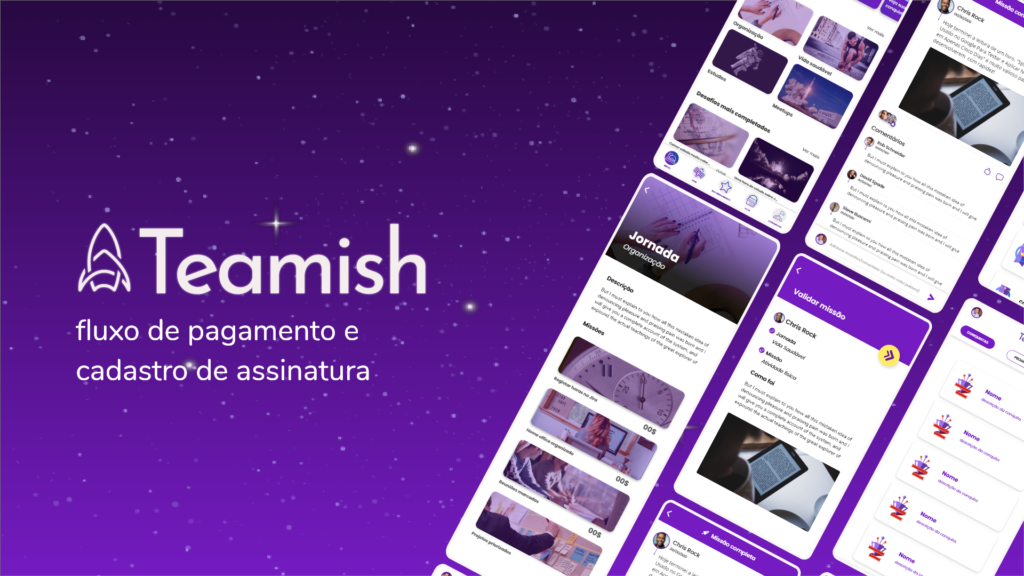
Background
Teamish is an application for motivating teams through gamification, which can be used free of charge for teams of up to 5 employees.
Teams of more than 5 employees have some subscription plans available.
My jobs
Research, interviews, storytelling development, user story map development, low and high fidelity prototypes, testing.
Case challenge
It is a complex flow where it is possible to register at various points in the flow, both for complete beginners to the application and for those who are already registered and intend to change plans.
Search
To better understand what stakeholders needed, interviews were held with them. For the solution to serve end-to-end, interviews were conducted with users of similar applications in order to discover how we could differentiate ourselves from competitors.
In addition to interviews, research was carried out on online payment APIs with the aim of understanding how they work.
The result generated the following insights:

Journeys
– Users who register for free via the landing page.
– Users who register directly with a subscription via the landing page.
– Registered users who wish to change their subscription via the landing page.
– Registered users who wish to change their subscription through the system platform.
"As a Teamish user, I want the user to be able to purchase the paid plan without the need for a free trial, so that it shortens the flow for the user who has already decided."
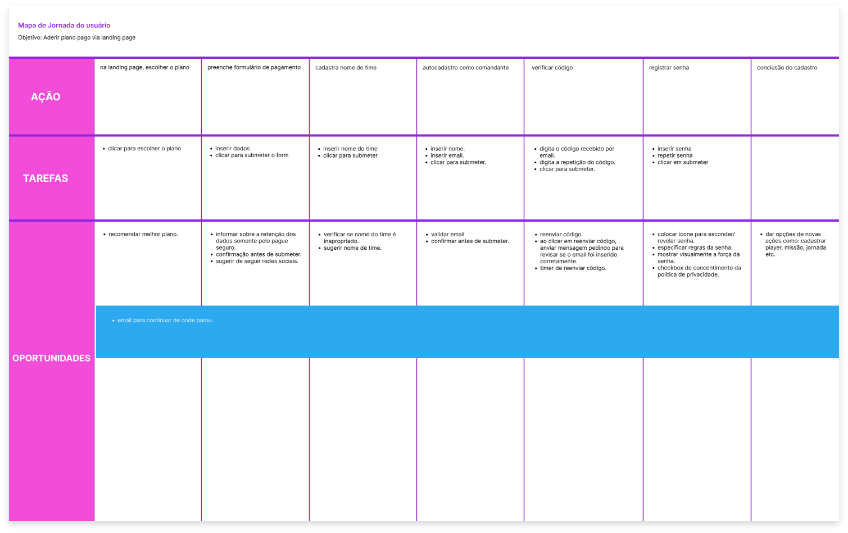
"As a Teamish user, I want to register for free, so that I can use the platform and decide on a subscription later."
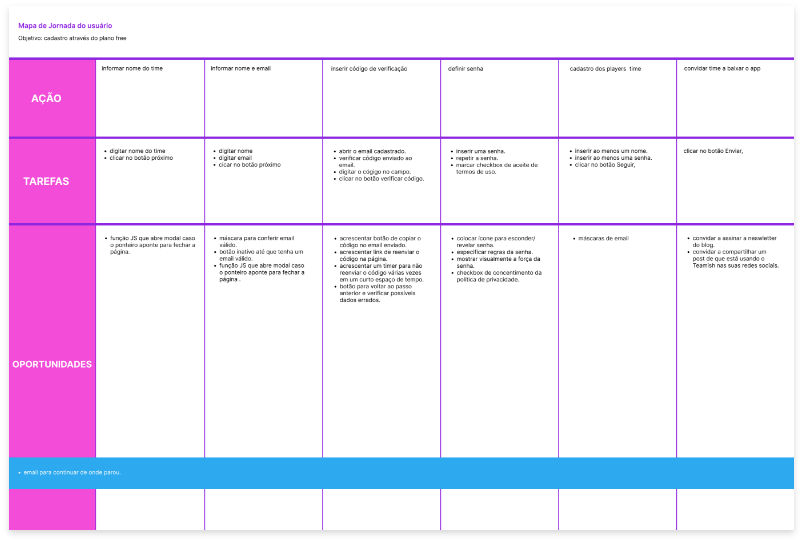
"As a Teamish user, I want to be able to change my plan as needed, so I can grow my team."
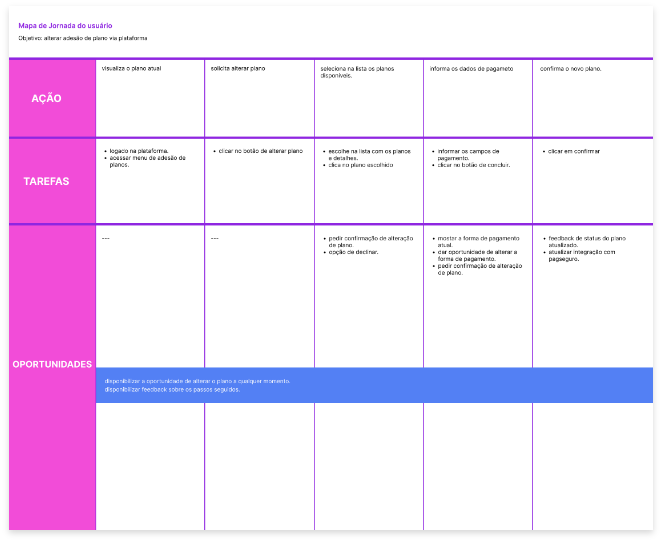
Storyboard
To facilitate the understanding of stakeholders, a storyboard was created, telling the story of how the user goes through the main flow.
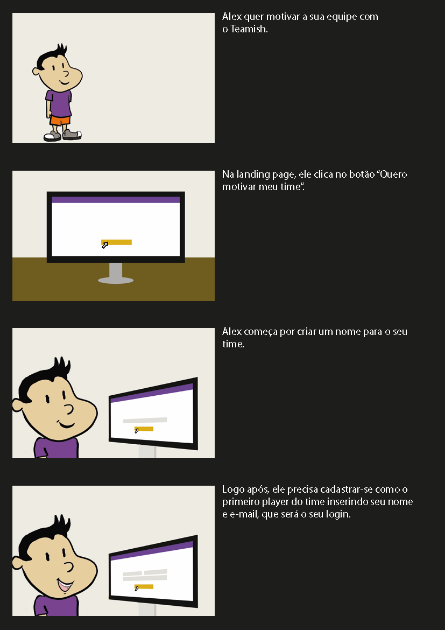

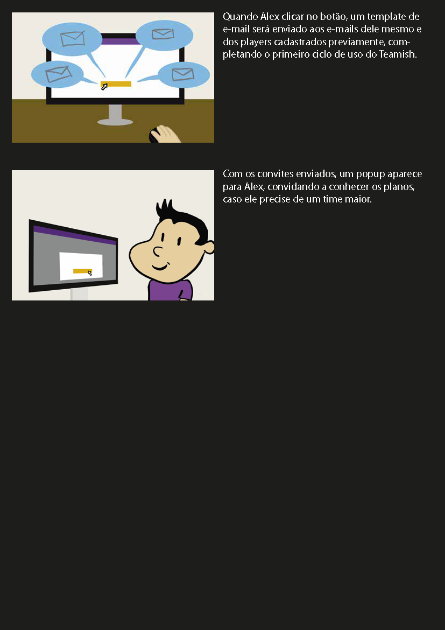
Prototype
Based on USM and storyboard understanding, the low-fidelity prototype was created.

With the approval of the low-fidelity prototype, I proceeded with the high-fidelity prototype.

Testes
In terms of accessibility, some tests with the most common visual impairments.
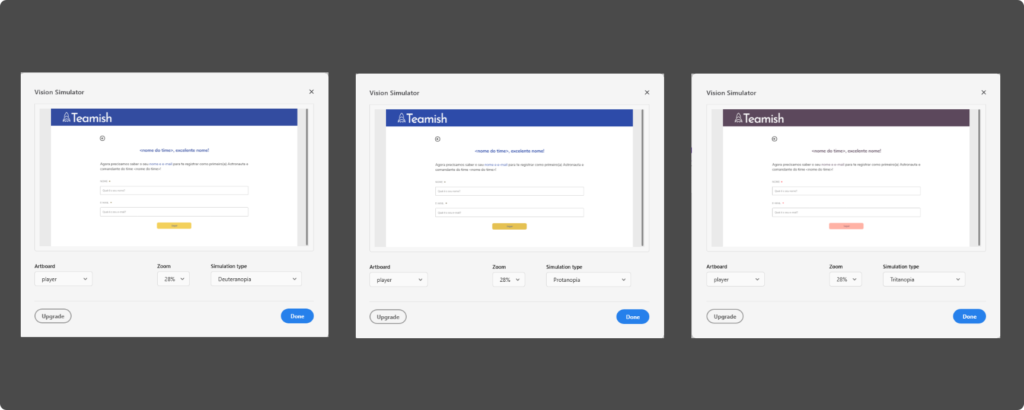
The four types of flows were tested and recorded for the appreciation of stakeholders and the team.
What I learned
Evaluate comments and extract good insights from interviews to balance the expectations of end users and stakeholders. In complex processes, attention to review is very important.
The next steps
Evaluate comments and extract good insights from interviews to balance the expectations of end users and stakeholders. In complex processes, attention to review is very important.